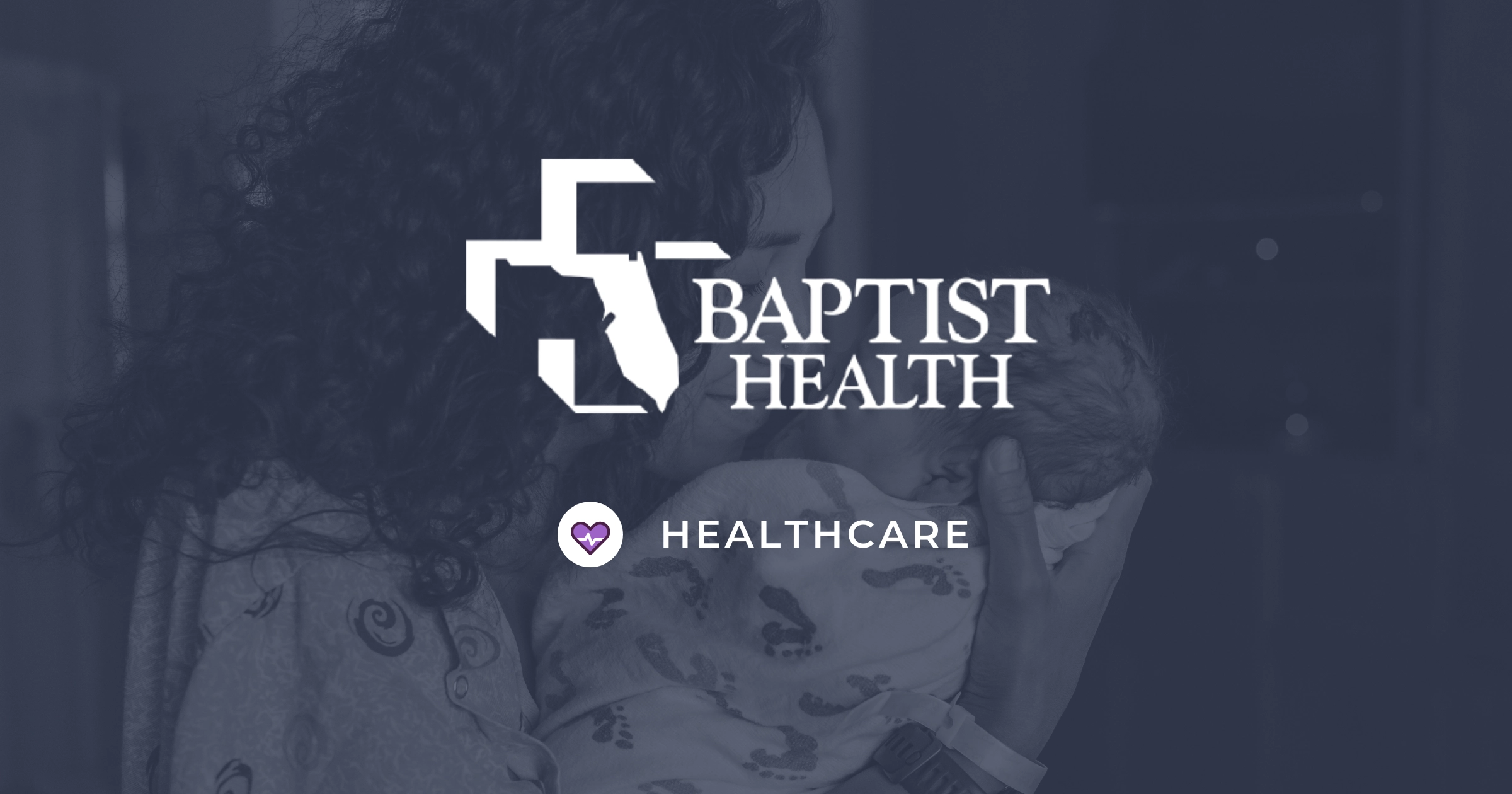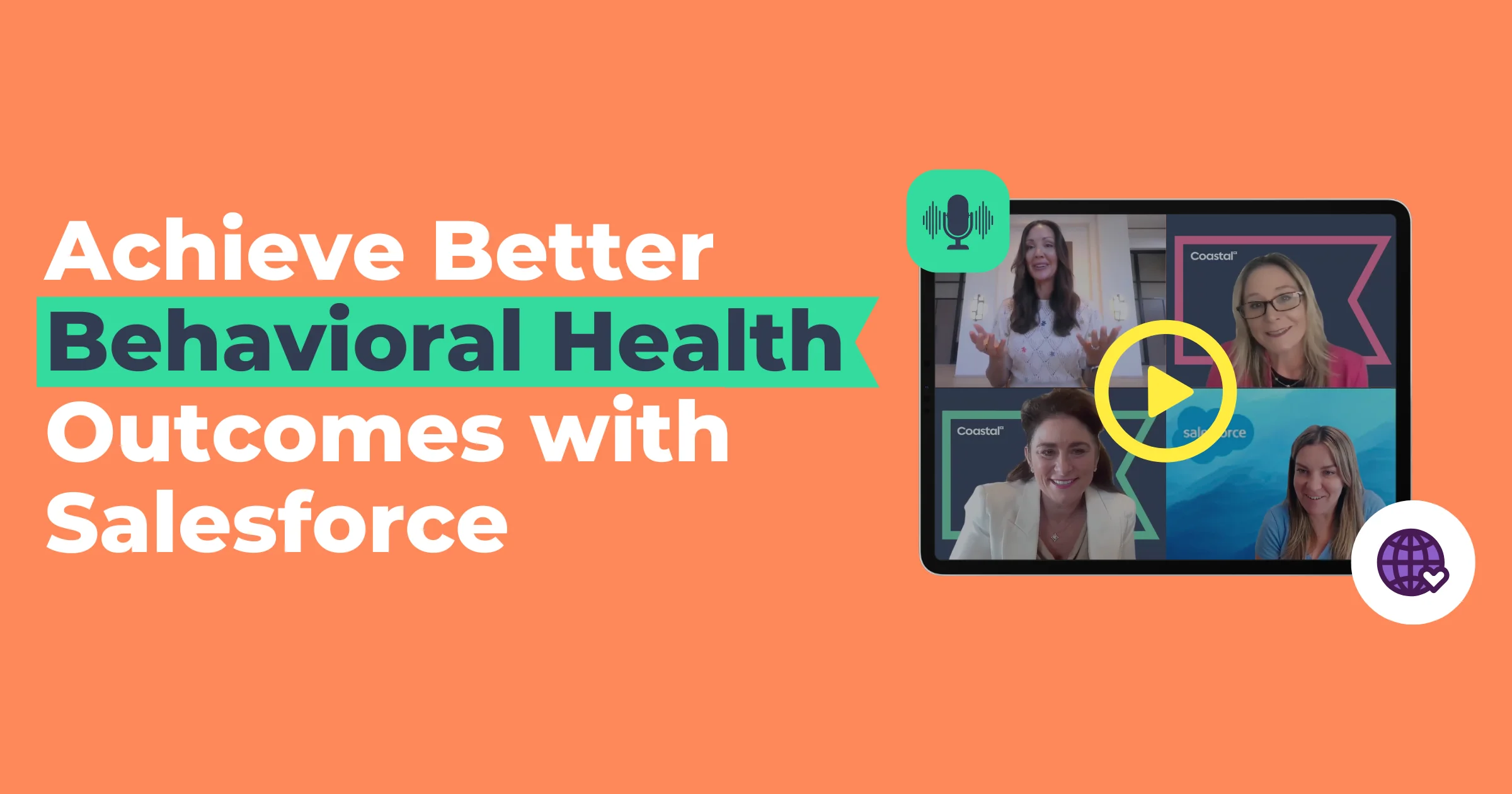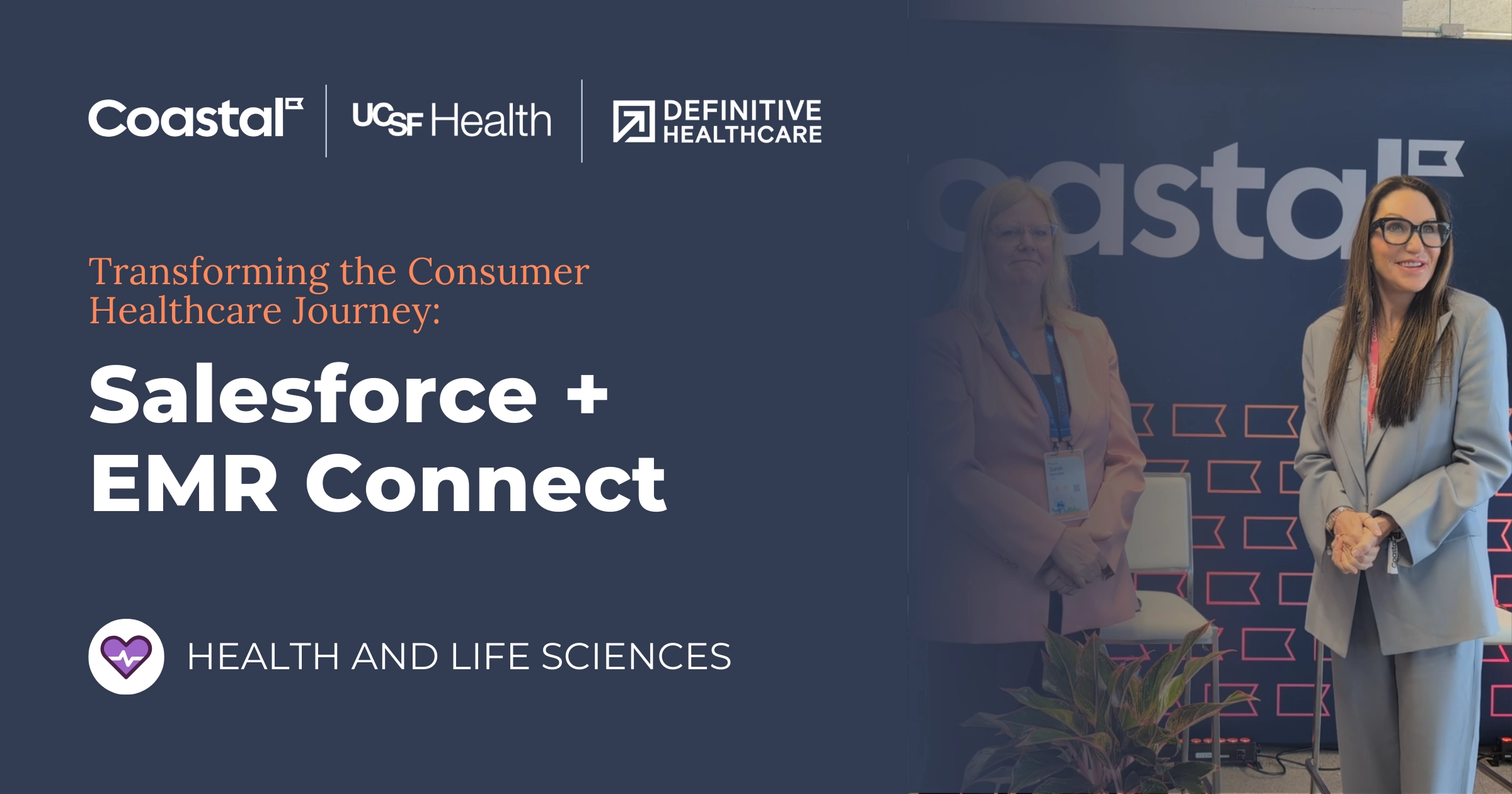If you’re a provider organization of health and human services (HHS), chances are you’ve already made a significant investment in your electronic health record (EHR) system. It’s the heart of clinical documentation and compliance, and supports the revenue cycle.
So the natural question most providers ask is: If the EHR manages clinical care, what does Salesforce bring to the table?
A lot, actually. Especially for everything that happens before and after someone receives care—like intake, engagement, and follow-up. That’s where Salesforce complements the EHR and fills critical gaps across the HHS care journey.
Where EHRs Fall Short in the HHS Care Journey
EHRs are purpose-built for clinical care. They document vitals, medications, progress notes, diagnoses, and treatment plans. But what they don’t do well is manage the full experience, from first outreach to long-term follow-up.
That gap is a key source of friction:
- Intake teams manually triaging inquiries from phone calls, email inboxes, and live chats
- Paper-based forms and assessments delaying admissions
- Families confused about benefits, paperwork, or next steps
- Clients falling through the cracks after discharge
- Outcomes data trapped in anecdotes instead of structured insights
These are not edge cases. They’re daily realities across HHS sectors: behavioral health, substance abuse, autism, hospice, rehabilitation and skilled nursing, developmental disability services, and more.
Why Nonprofit HHS Providers Struggle Without CRM Support
Nonprofit providers are often in high demand with limited capacity. They’re not chasing clients—they’re managing overwhelming volume. But that doesn’t make CRM irrelevant. If anything, it makes it indispensable.
When organizations rely on spreadsheets and inboxes to manage inquiries, referrals, assessments, and capacity, they lose visibility. They struggle to convert potential clients, track how many people are waiting, identify where bottlenecks are happening, or which referral sources are most effective. That makes it harder to scale, harder to realize revenue, and harder to improve the experience for families already under tremendous stress.
How Salesforce Supports the Full Care Journey for HHS Organizations
Salesforce is not an EHR substitute. It doesn’t document clinical care. What it does is structure everything else:
- Inquiry management: Route and prioritize leads across phone, web, SMS, and emails
- Pre-care assessments: Digitally collect bio, psychosocial, and medical clearance data
- Insurance verification: Confirm coverage and eligibility, and communicate financial responsibilities early
- Capacity matching: Align client needs with real-time program availability
- Document automation: Send and collect forms, including HIPAA policy, financial agreements, and consents
- Post-care engagement: Conduct outcome surveys, alumni outreach, or donor campaigns
These are the operational muscles your EHR was never meant to flex. But they’re central to delivering timely, well-coordinated care—and keeping patients, families, and staff aligned.
Real-World Results: How Baptist Health Used Salesforce to Improve Access and Engagement
Baptist Health runs five hospitals and over 200 care sites across Northeast Florida. Like many large health systems, they were sitting on a mountain of patient data, but it was scattered across systems that didn’t talk to each other. That slowed down outreach and made it harder to connect with patients in meaningful ways.
Coastal helped unify their systems so staff could act on the information they already had. Here’s what changed:
- All patient data in one place: Instead of toggling between platforms, staff can see a full view of each patient’s history, needs, and preferences in real time.
- Faster patient engagement: Outreach that used to take weeks now happens in days.
- Personalized care journeys: Whether it’s lung cancer prevention or primary care follow-up, teams can quickly identify the right patients and connect with them at the right time.
The results speak for themselves:
- 10x faster turnaround for high-priority outreach campaigns
- Over 120 high-risk patients engaged within 30 days
- 200% increase in primary care follow-up conversions
- 25% drop in bariatric surgery wait times
By connecting the dots between data and action, Baptist Health made it easier for patients to get timely care—and for staff to focus on delivering it.
Speed Matters in Crisis—Here’s How HHS Providers Respond Faster
Families don’t shop for services casually. When someone is seeking care, it’s often after a precipitating event: an episode of self-harm, a new acute diagnosis, or a loss of function. They may reach out to five or ten organizations at once, unsure of what to expect, how they’ll afford it, and which will provide the best care.
The providers who respond quickly, clearly, and compassionately stand out. And that responsiveness relies on more than goodwill. It requires systems built for speed, structure, and follow-through.
HHS Impact: Faster Intake, Smarter Referrals, Better Care Coordination
We’ve seen providers transform their intake experience by moving it to Salesforce. That includes everything from structured lead tracking to understanding where referrals come from—and which ones actually result in care for families facing urgent or complex needs.
In behavioral health alone, Salesforce helps:
- Reduce days-to-admission by streamlining assessments
- Improve staff efficiency by automating manual tasks
- Provide executive visibility into where demand is outpacing capacity with dashboards that show inquiry volumes, referral trends, and bed availability in real time
- Support marketing, alumni, and fundraising efforts with tailored engagement journeys
And while it’s especially resonant for behavioral health, these same principles apply across any care-based organization, from hospice to skilled nursing to developmental services.
Check Your Intake and Engagement Gaps—And What They’re Costing You
Everything we’ve covered—manual intake, disjointed referrals, unclear follow-ups—is more than a technology problem. It’s a consumer experience problem. And it’s exactly what today’s patients notice first.
If you’re wondering where your organization might be falling short, start with Coastal’s Healthcare Consumer Experience Checklist. It’s a quick self-assessment to help you spot where your current process may be slowing care or leaving families frustrated.
Looking for real-world examples? Our on-demand Behavioral Health Webinar shows how HHS organizations are using Salesforce to shorten wait times, connect people to the right level of care faster, and support families through every step of intake and treatment.



